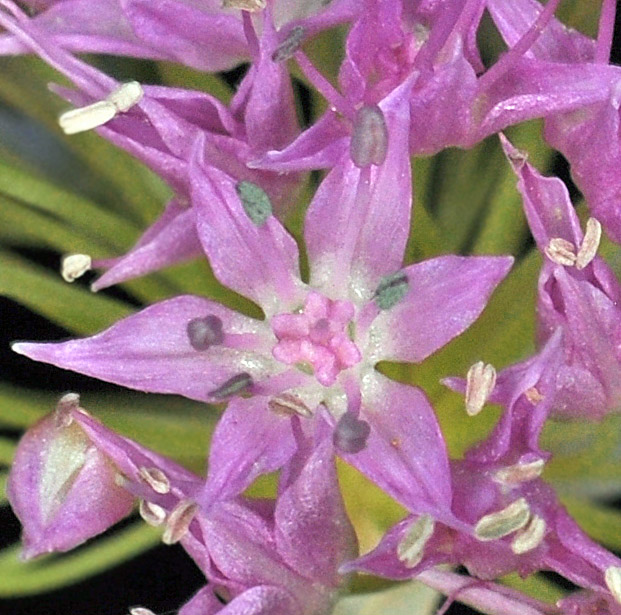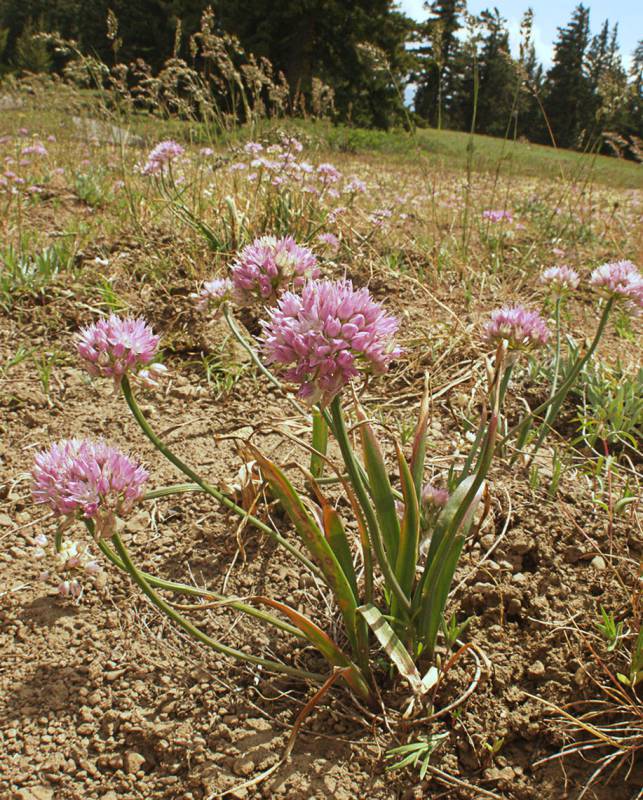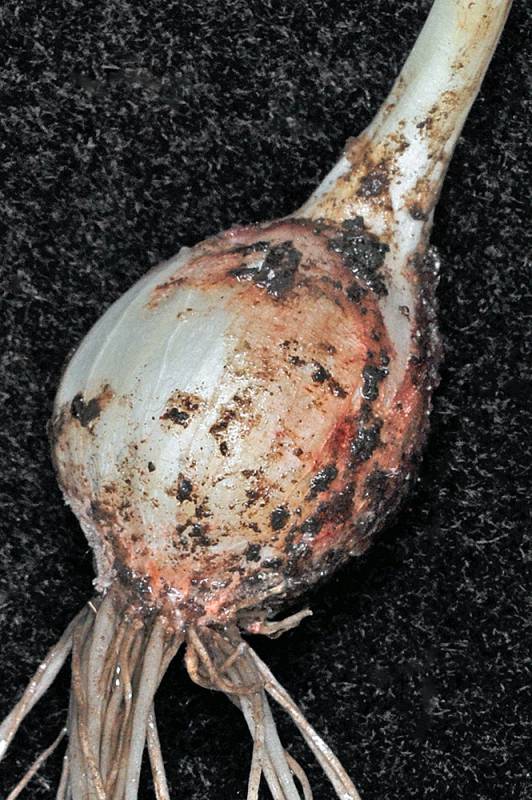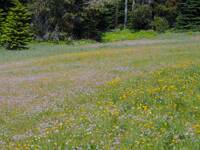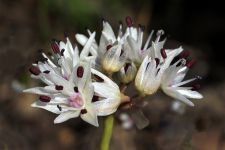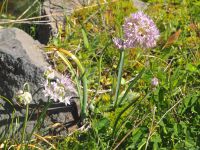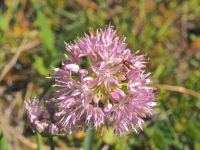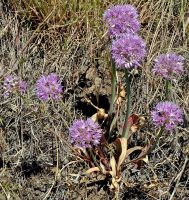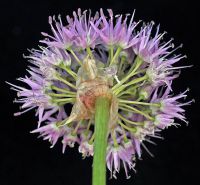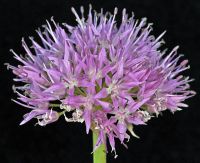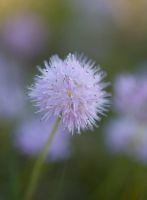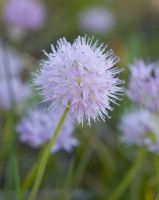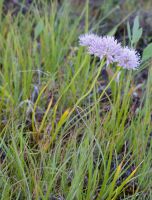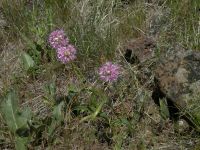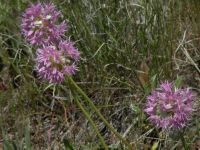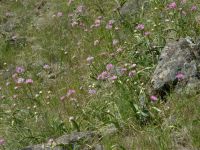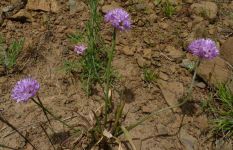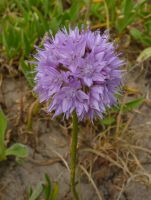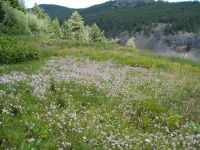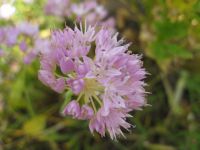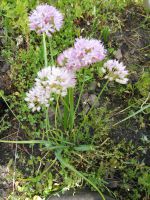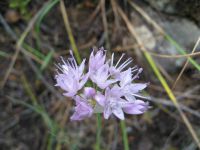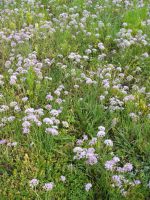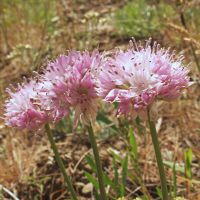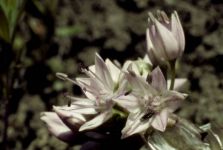Distribution: Occurring east of the Cascades crest in southeastern Washington; southeastern Washington to eastern Oregon.
Habitat: Open, vernally-moist areas at low to moderate elevations.
Flowers: May-July
Origin: Native
Growth Duration: Perennial
Conservation Status: Not of concern
Pollination: Bumblebees, bees, flies, hummingbirds
Scapose perennial from one or more ovoid bulbs, the inner coats reddish to white, the outer coats gray to brown; with a thin inner membrane showing a distinct network pattern.
Leaves 2, broad and flat, up to 15 mm. broad, persisting at maturity, shorter than the scape; scape usually 2-3 dm. tall, terete.
Umbel several- to many-flowered, the slender pedicels 2-3 times the length of the tepals; tepals usually 7-8 mm. long, entire, pointed, narrowly lanceolate, usually pink; stamens 6, about as long as the tepals.
Capsule 3-celled.
Publication: Fl. Bor.-Amer. 2: 184, plate 197. 1838.
PNW Herbaria: Specimen records of Allium douglasii in the Consortium of Pacific Northwest Herbaria database
WA Flora Checklist: Allium douglasii checklist entry
OregonFlora: Allium douglasii information
E-Flora BC: Allium douglasii atlas page
CalPhotos: Allium douglasii photos

